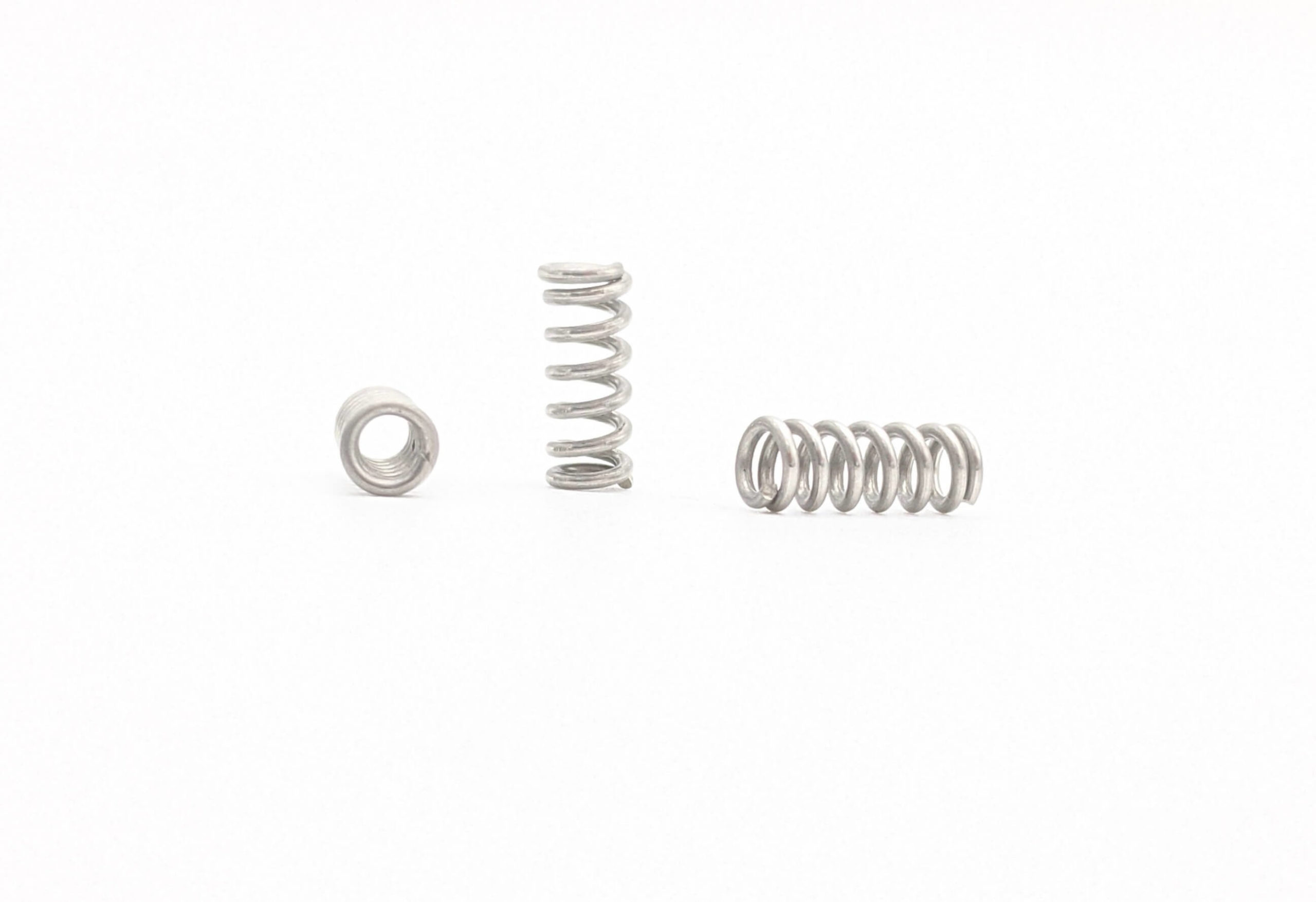Get unique, complex parts easily. No matter your requirements, Chaoyi Spring creates hard-to-produce coil springs and wire forms.
Let us help you create the custom wire form you need, from S-hooks and J-hooks to utility hooks and more.
We work closely with customers across a wide range of industries, helping them design and manufacture made-to-order parts.
Why choose Chaoyi Spring? We prioritize customer-focused collaboration, modern equipment and the latest technology to make your parts per print.
Find the information and guidance you need, from measuring a spring to learning about materials, placing an order and much more.
Choosing the right compression spring for your application can be a daunting task, especially if you're not familiar with the intricacies of spring sizing and selection. This comprehensive guide delves


Choosing the right compression spring for your application can be a daunting task, especially if you're not familiar with the intricacies of spring sizing and selection. This comprehensive guide delves into the world of compression springs, providing a deep dive into understanding their size charts, interpreting the information they provide, and applying this knowledge to select the perfect spring for your specific needs.

Compression spring size charts are essential tools for engineers and designers working with mechanical systems. These charts are a visual representation of the various specifications and characteristics of a wide range of compression springs, allowing you to quickly compare and select the most suitable option for your project.
The information provided in a typical compression spring size chart will include:
These factors work together to determine the spring's overall performance and suitability for specific applications. A good spring size chart will present this information in a clear and concise manner, making it easy for users to find the right spring for their needs.
Reading and understanding compression spring size charts effectively requires some technical knowledge of spring design principles. Here's a step-by-step guide to help you navigate these charts:
Remember that a compression spring size chart is just a starting point. It provides valuable information about different spring options, but it's crucial to carefully assess the details and consider your specific application to ensure the chosen spring meets your needs and performs reliably.
Selecting the appropriate compression spring size is essential for ensuring that your system functions correctly and performs reliably. The following steps will guide you through the process:
By following these steps and consulting a compression spring size chart, you can confidently select a spring that meets your specific requirements and ensures optimal performance in your mechanical system.
Utilizing compression spring size charts offers several benefits for engineers, designers, and anyone involved in selecting springs for their projects:
Using a compression spring size chart is a crucial step in ensuring that your project's spring selection is accurate and efficient. By taking advantage of the valuable information provided in these charts, you can select the perfect spring for your specific needs and achieve optimal system performance.
Compression spring size charts are indispensable resources for anyone working with springs. They provide comprehensive information about different spring types, specifications, and characteristics, enabling users to make informed decisions and choose the perfect spring for their applications. By understanding the information presented in these charts and following the guidelines outlined in this article, you can confidently select the right compression spring for optimal performance and system reliability.
Remember that the journey to selecting the perfect compression spring doesn't end with the chart. Careful consideration of your specific needs and the application's requirements is essential. With the right knowledge and approach, you can navigate the world of compression springs with confidence and ensure the success of your project.
Browse some of the custom wire forms and springs that we manufacture. Don’t see what you need? We specialize in made-to-order products that meet your application requirements.
Visit Our GalleryNeed a custom wire form or coil spring? We make it work. Fill out the contact form and a representative will respond within 1 business day. If you have a PDF or CAD file, you can submit to request a quote.